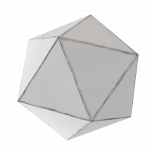Life of Escher
Life of Escher is an experimental virtual reality experience about the life of the Dutch graphic artist Maurits Cornelis Escher. The project was developed as part of a course at Potsdam University of Applied Sciences and investigates whether conventional Wikipedia entries can be presented in virtual reality in a more experimental and thematically appropriate way.













